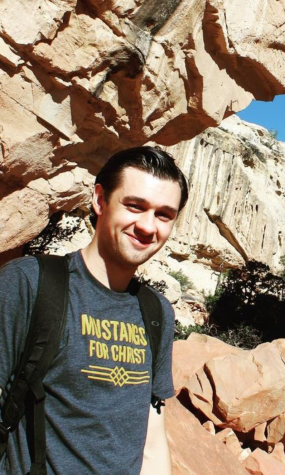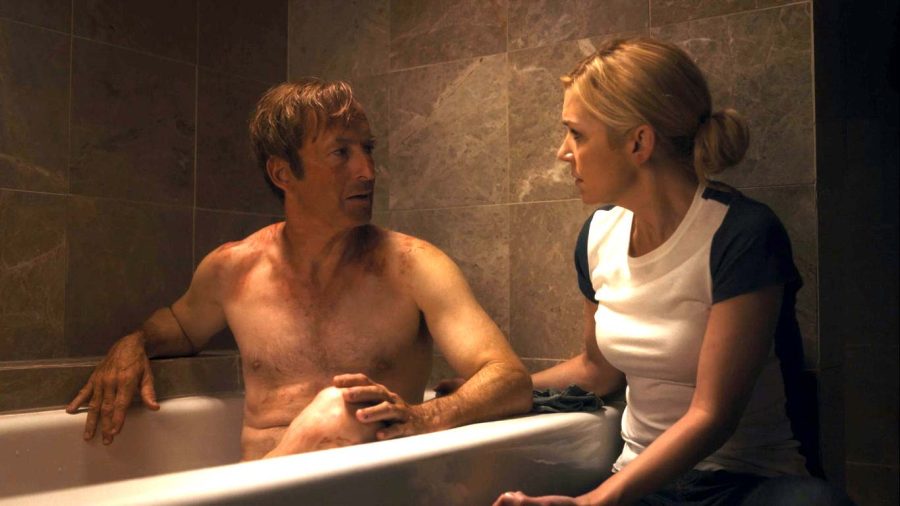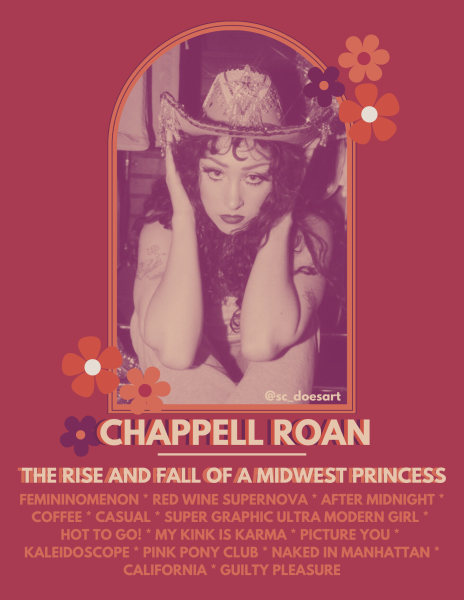“Better Call Saul” is a lesson in subtlety, but is it too subtle?
Bob Odenkirk plays main character Saul Goodman in “Better Call Saul,” 2020. Courtesy of Sony Pictures Television.
Season six of “Better Call Saul” has just arrived, releasing two or three episodes per week to keep people from binging but also avoiding too much of a wait for the whole season to come out. Regardless of strange streaming techniques used by modern TV companies, Netflix has finally made Season five of “Better Call Saul” available for users to watch in one or two sittings. I was skeptical of “Better Call Saul,” as I believed “Breaking Bad” (the show “Better Call Saul” is a prequel to) is near impossible to beat in terms of character and plot development, but the first three seasons really convinced me of the show’s worth in the “Breaking Bad” universe, and Season five really sets a great stage for the show’s finale.
“Breaking Bad,” at its core, is about a man who would otherwise be assumed to be an upstanding, law-abiding chemistry teacher but lives a double life as a ruthless drug pin. “Better Call Saul” is inverted, telling the tale of Saul Goodman (played by Bob Odenkirk) who is expected by everyone to turn into a crook, when in reality he wants to help others but knows how easy it is to cheat and manipulate to get his way. It just comes naturally to him, so watching these shows side by side displays an incredible thematic contrast I thought only achieved in literary classics. Granted, the first three seasons were so good because of the inclusion of Chuck McGill, Saul Goodman’s brother. With Michael McKean’s departure from the show, the writers have really had a hard time justifying its progression. As Jesse Pinkman represented the polar opposite personality of Walter White, McGill represented the polar opposite of Goodman. So, Season four of “Better Call Saul” was pretty forgetful without McKean.
However, Season five makes plot lines I once found skippable turn into worthwhile stories. In past seasons, the plot lines including the crime bosses from “Breaking Bad” really bored me, and I felt like these stories demystified these characters and their appearances in Walter White’s storyline, as most prequels do. However, in Season five, I really enjoyed how they tied these story threads into Kim and Saul’s storyline, as they’ve generally remained separate from one another up until this point. Season five also fleshes out the emotional through lines of the show, such as Kim Wexler (Rhea Seehorn) and Saul’s romantic relationship being tested in a unique and dramatic fashion, not to mention all the schemes Goodman commits to in enacting revenge against Howard Hamlin (Patrick Fabion), the show’s straight-laced technocrat who wants to make amends with Goodman but quickly realizes nothing can eclipse the chip on Goodman’s shoulder, put there by all Chuck McGill did to prevent him from being a lawyer.
With crime bosses, scheming lawyers, narrow escapes and criminal intrigue, one would think “Better Call Saul” is an action-packed, sensationalist show, in the same vein as a “House of Cards”. This couldn’t be farther from the truth. Instead of opting for the sensational, cheap back steps, needless twists in character motivations, the writers of “Better Call Saul” prefer the little things over the large. The center visual piece for a main character getting kidnapped isn’t something obvious or tired or cliche, like a dropped photo or something. It’s an ice cream cone, dropped on the ground, which becomes infested by ants in the timespan the main character is detained by criminals. The word “nuance” is a pretty overused descriptor nowadays, but good stories, in my opinion, don’t opt for the obvious image or symbol. They show us something we haven’t seen before. As “Better Call Saul” spends an episode introduction on the slow decay of an ice cream cone, swarmed by insects, some may think that’s boring, but I really respect the pursuit to give audiences a point of view they haven’t seen before.
Sure, a character balancing a revolver on a train track isn’t as exciting as a character dramatically throwing his weapon into the sea, but at least it’s unique, which is a rarity in television and cinema today. “Better Call Saul” sometimes opts for the less exciting option in their storylines, but they always show deep character interactions, complex emotional states and well-written plot developments while avoiding the sensational. I think that’s the mark of a very good drama. Season five of “Better Call Saul” skillfully sets the stage for the series finale, and I think it’s a well-written addition into the “Breaking Bad” universe. I’m giving this one a 4 ½ out of 5.

Hey everyone! My name is Joseph Nelson, and I am an English major graduating in 2022. I joined The Wichitan in the Fall of 2020, and I've really enjoyed...













